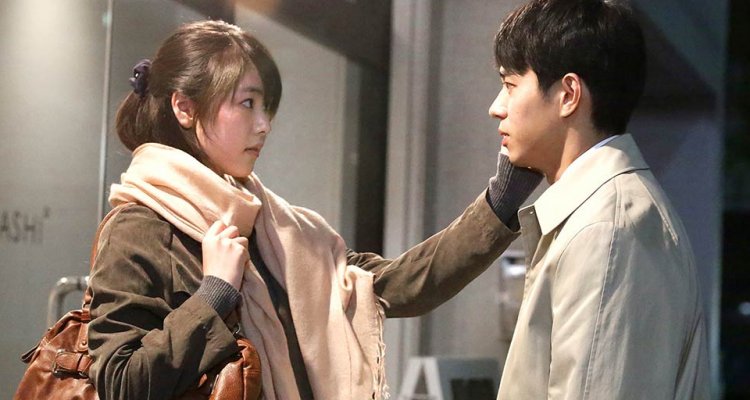This strange, deliberately naïve film plunges a high-concept romance into a banal, lifeless world. Therein lies profundity, but it makes for a disjointed, peculiarly shallow experience. Interiority is displaced; faces remain unmoved, difficult to parse; landscapes are sterile, otherworldly. “Asako I & II” testifies for the innate inadequacy of love and the a priori reality of manifold desire, of dirtied beauty, of mitigated intimacy. You can’t always get what you want. And if you do, it’s sullied, malformed. Japanese director Ryûsuke Hamaguchi stretches and contorts this thesis into a tonal menagerie, one striking and bemusing, an assortment of cages from which the forlorn fail to escape.
Based on Tomoka Shibasaki’s novel “Netemo Sametemo,” ‘Asako’ has characters defined by passivity and quiet heartbreak. Dual identities and multiple motivations are of central concern, couched in melancholy, set in a Japan wherein things happen to you, wherein agency and decision are withdrawn. Carved out of alabaster, college student Asako (Erika Karata) falls in love once differently or twice the same. Her infatuation rests on a doppelgänger: Baku, the absent, flash, enigmatic bore; and Ryohei, the caring, attentive, straight-edged bore (both played by Masahiro Higashide). One looks like a failed musician, the other an advertising executive. For the first love, she suffers cruelty; for the second, she inflicts it. This is how sorrow sustains itself.
That the men look the same invokes the uncanny, of course, but the similarity runs deeper: these are polar archetypes that induce sickness and blanket craving. To be completely earnest or completely cynical is to barely differ. Asako yearns for adventure and security, to be nasty and nice. That she is both ‘I & II’ suggests these lovers constitute a mirror held up to her face. Are the double, in fact, a treble? Stilted, off-center dialogue perpetuates uncertainty and unease. No one can adequately speak to each other. References to the theatre of Ibsen and Chekhov produce and ironize a breakdown of language. Even the attempts at humor — essentially the inclusion of a fluffy cat — feel knowingly tacked on, a broad strategy to unsettle, beguile, disconcert.
Asako’s heart is torn and years later repaired. This doesn’t make for a happy ending, more an agonizing extension of amorous pursuit, never sated. Ryohei’s introduction into her life is both foreboding and anticipatory. The rupture of Baku’s return is necessarily imminent. When the identical pair meets what do they see: a headless corpse, a shadowy dark head, someone nodding imperceptibly? Each is one half of Asako’s loneliness, her disorientation, her fear of male violence, her lust for male authority, her complicated response towards imitation and doubling. That Asako is portrayed as a cipher allows for such speculation. How interesting is it to have a woman protagonist so unable to articulate herself, to clarify or discriminate? Perhaps this is the result of male oppression, but rendered here it is neither artistically interesting nor politically productive. The call for complex female characters is undercut here by a call for sentient ones.
Harsh, discordant blasts signal the moments of heartbreak, punctuating the eerie fugue encouraged by Yasuyuki Sasaki’s cool, distant cinematography. Hamaguchi, on from the success of his last film “Happy Hour,” retains an atmosphere of ambiguity, a form of storytelling that intrigues and bewilders, before falling into a stationary condition of delay. Scenes demarcate affection as a product of oscillation rather than advance. Ardour produces a coiled line, not a linear diagonal. Within this trajectory, Asako embodies a great sense of aloneness, compounded by her blank, internalized expression. Present and absent friends can’t pierce her detachment or cajole her into rational thinking. One, Haruyo (Saira Ito), warns her bluntly of Baku’s uncaring capriciousness. But desire is necessarily selfish and attraction impulsive. This is how love works: illogical and confounding, untidy and unfair.
There’s an arresting scene by the ocean. Over the concrete fortification, Asako stares out. Her future bears up, solemn and afar. In Kate Chopin’s story “The Awakening,” the protagonist Edna faces the unending sea, the setting for watery suicide. Love has disappeared forever, entangled in convention, in the cruel condition of respectability. Interpreted as a final act of self-realization, this pristine decision appears in ‘Asako’ as something less definitive. Our protagonist turns away from the abyss and into lovelorn compromise, one workable and impure. [C+]

